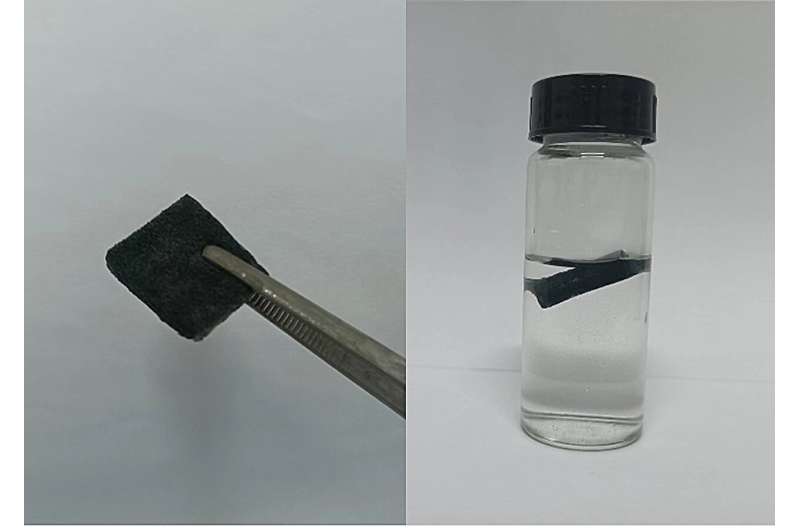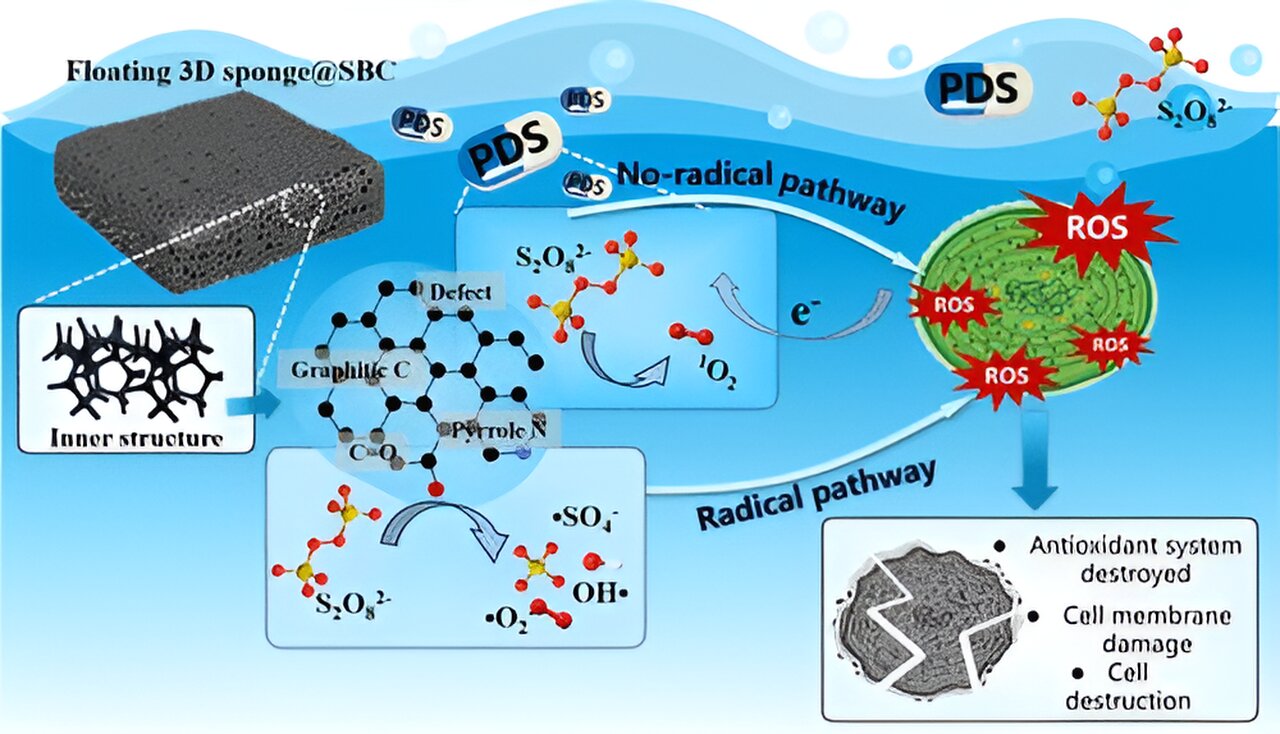During the scorching summer months, beach enthusiasts do not want their plans ruined by harmful algal blooms (HABs). However, the current methods for eliminating or killing toxin-producing algae and cyanobacteria are not efficient or feasible for direct use in water bodies.
Researchers have now proposed a solution in ACS ES&T Water, where they coated a floating sponge with a charcoal-like powder. When combined with an oxidizing agent, the technique successfully destroyed over 85% of algal cells from samples taken from lakes and rivers.
Large patches of electric green and vibrant orange-red HABs, as well as the less brightly colored cyanobacteria Microcystis aeruginosa, can produce toxins that can harm both humans and animals. Previous studies have demonstrated that acids and strong oxidizing agents can damage and destroy M. aeruginosa cells, but they also generate unwanted and potentially harmful byproducts.
In a recent study, Jiangfang Yu, Lin Tang, and their team proposed that persulfate-based oxidants could be effective in controlling algal blooms caused by this species, but these compounds require catalysts such as powdered biochar, which is a charcoal-like substance made from carbon-containing waste. Therefore, the researchers aimed to develop a floating material that contains biochar to enhance the destruction of harmful algal cells without causing harm to the environment through byproducts.

The researchers began their experiment with a porous sponge made of melamine and created powdered biochar from shrimp shells. They layered a thin sheet of polyvinyl alcohol between the sponge and the biochar, and fused the layers together at a temperature of 572 degrees Fahrenheit. When combined with a persulfate-based oxidizing agent, the floating sponge damaged the membranes of approximately 90% of the M. aeruginosa cells in laboratory dishes within five hours. Once the membranes ruptured, the cells released their internal contents, which rapidly decomposed into smaller components.
Furthermore, the researchers applied their catalyst sponge and persulfate system to real-world lake and water samples, resulting in the inactivation of more than 85% of the algal cells. Based on these findings, the team suggests that this new system could be an effective technique for mitigating algal blooms in environments affected by this issue.
More information: Lifei Deng et al, Floatable 3D Sponge@SBC-Induced Dual-Pathway-Activated Persulfate for Microcystis aeruginosa Inactivation, ACS ES&T Water (2023). DOI: 10.1021/acsestwater.3c00202
Citation: A floating sponge could help remove harmful algal blooms (2023, August 1) retrieved 1 August 2023 from https://phys.org/news/2023-08-sponge-algal-blooms.html
This document is subject to copyright. Apart from any fair dealing for the purpose of private study or research, no part may be reproduced without the written permission. The content is provided for information purposes only.
Denial of responsibility! TechCodex is an automatic aggregator of the all world’s media. In each content, the hyperlink to the primary source is specified. All trademarks belong to their rightful owners, and all materials to their authors. For any complaint, please reach us at – [email protected]. We will take necessary action within 24 hours.

Jessica Irvine is a tech enthusiast specializing in gadgets. From smart home devices to cutting-edge electronics, Jessica explores the world of consumer tech, offering readers comprehensive reviews, hands-on experiences, and expert insights into the coolest and most innovative gadgets on the market.


